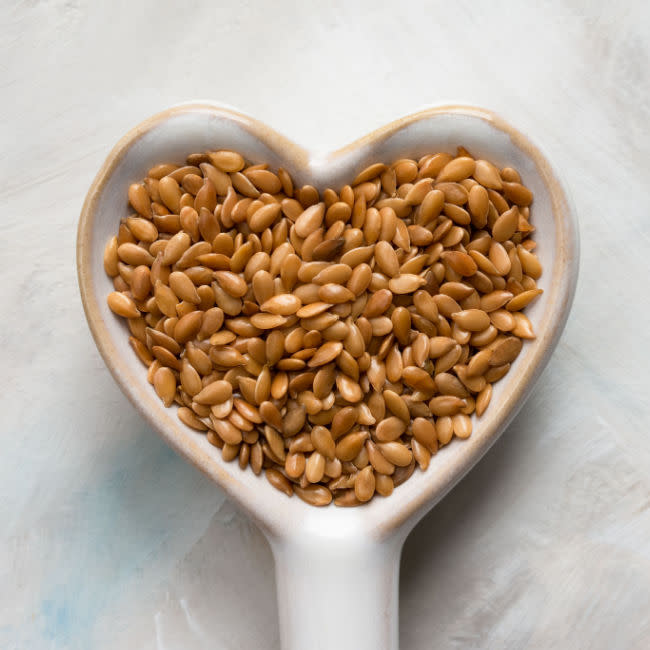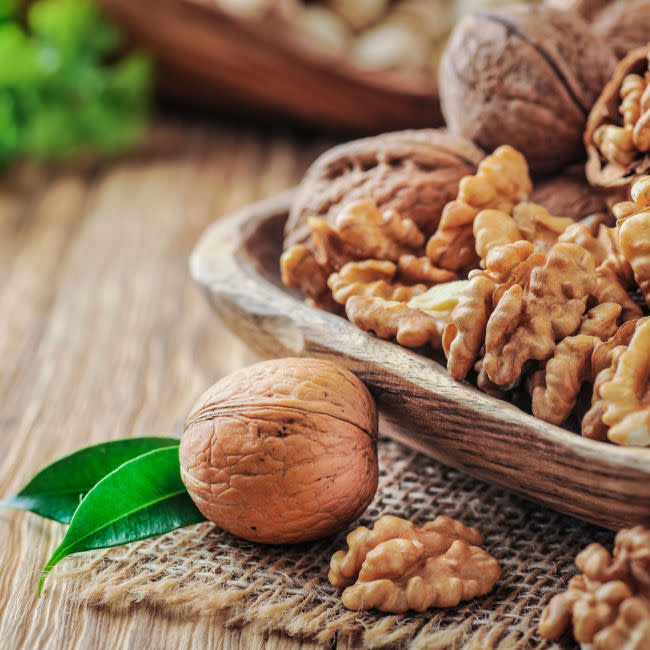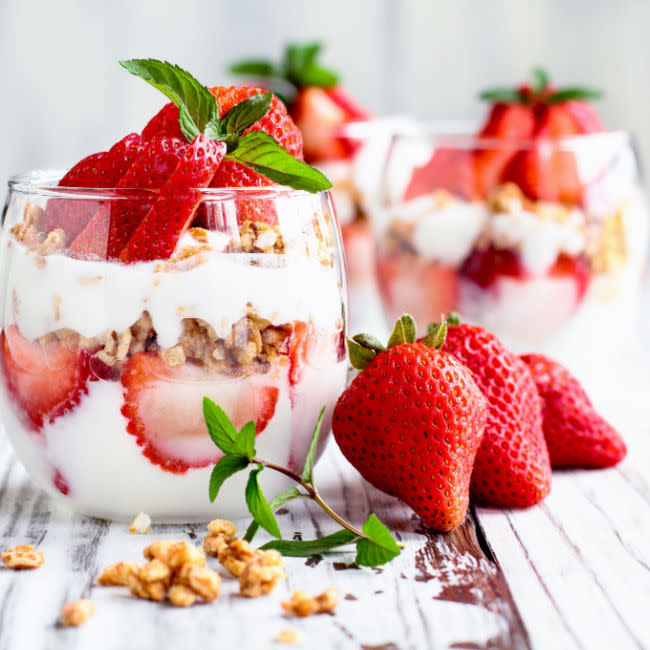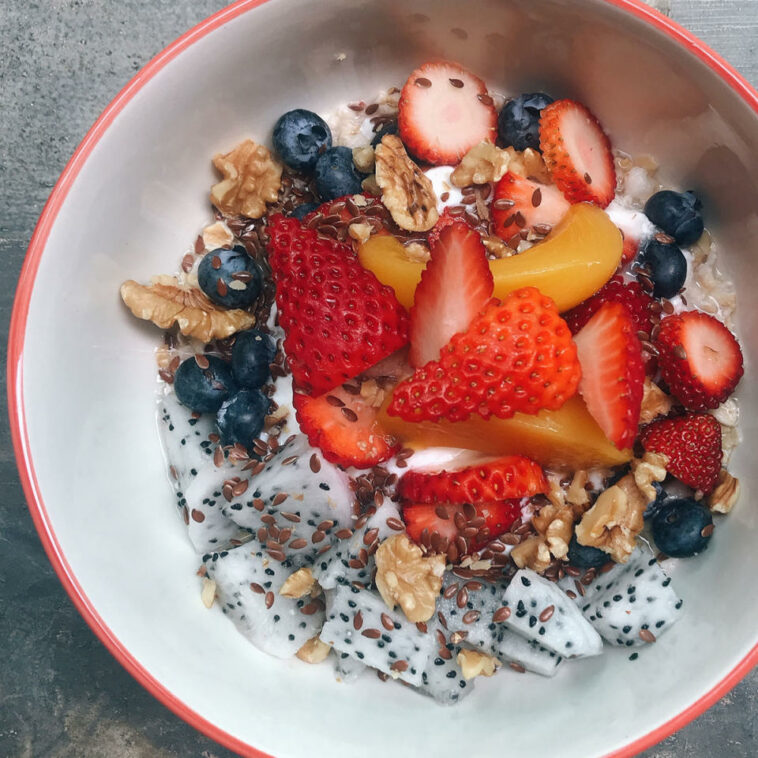High blood pressure can stem from a range of issues. From unhealthy lifestyle choices to plain old genetics, there are many reasons you may be dealing with hypertension. However, there are also many things you can do in order to set your body back on track to a healthier blood pressure—and that includes making changes to your diet. While certain things like fried, salty foods should be avoided, there are also foods you can add to your diet in order to eradicate the issue.
To discover some of the best foods you can eat regularly to lower your blood pressure, we spoke to health experts Lisa Richards, nutritionist and creator of The Candida Diet, and Laura Ali, dietitian. They told us that flaxseed, walnuts, and yogurt are three healthy options you should reach for this fall!

1. Flaxseed
Adding more fiber to your diet is a great way to help lower your blood pressure, and Richards says flaxseed is a fantastic source of this nutrient. “Flaxseed is high in fiber which helps to improve gut health, remove toxins from the body, and reduce cholesterol. Each of these benefits of fiber would aid in reducing blood pressure as a side effect,” she explains. In order to reap the most benefits possible from this seed, however, she says you should make sure to eat ground flaxseed: “Flaxseed is absorbed best by the body when it is ground as enzymes are unable to adequately break apart the outer husk.” Got it! Luckily, flaxseed can easily fit into a number of recipes, including smoothies, oatmeal, and “even some desserts.” Yum! Count us in!

2. Walnuts
There are so many benefits to snacking on healthy nuts like walnuts, and Ali tells us that lowered blood pressure is just one of the perks at hand. “Walnuts are rich in omega-3 fatty acids, fiber and an antioxidant called ellagic acid, all which may help reduce the risk of heart disease and stroke,” she notes. In fact, she points out that one study in the Journal of the American Heart Association “found that substituting walnuts for higher saturated fat foods helped reduce blood pressure over a 6-week period.” Nice! That means swapping your processed snacks for a handful of nuts can do wonders for your overall health. Additionally, you can easily mix walnuts into a range of meals you eat on a regular basis. “Mix ¼ cup of chopped walnuts into your morning oatmeal, toss them in a salad or mix them into a chicken salad or on top of a vegetable pasta,” Ali suggests.

3. Yogurt
Are you eating enough calcium? If not, Ali says you may want to up your intake—and not just for the sake of your bones, but for your heart health, too. “Calcium triggers our heart muscle to contract, pumping blood through our body,” she explains. One great, tasty source of calcium is yogurt. “Research has shown that people that eat 5 or more servings of yogurt a week have a significantly reduced risk of high blood pressure than those who ate it less than once a month,” Ali shares. Wow! Luckily, she points out that yogurt is an incredibly versatile food, so you shouldn’t have a hard time fitting into into your diet. As it turns out, it’s good for more than just parfaits! “Try adding plain or fruit flavored yogurt to a smoothie or add some lemon juice to it to make a fruit dip or herbs to make a creamy salad dressing. Use plain yogurt in place of sour cream or buttermilk in recipes. Use it to make a cream sauce or swap it for buttermilk or sour cream in baked goods,” she lists. We’re trying all of this ASAP!
Of course, lowering your blood pressure is ultimately a concentrated effort. You should always prioritize a health lifestyle overall by exercising regularly, reducing stress, and incorporating other good habits into your routine. But diet can play a major role in this process, and eating these foods regularly is definitely a good idea!
This content should not be accepted as official or professional advice.









GIPHY App Key not set. Please check settings